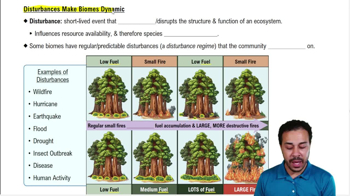Suppose that the number of bird species is determined mainly by the number of vertical strata found in the environment. If so, in which of the following biomes would you find the greatest number of bird species?
a. Tropical rain forest
b. Savanna
c. Desert
d. Temperate broadleaf forest






